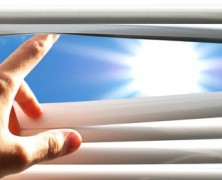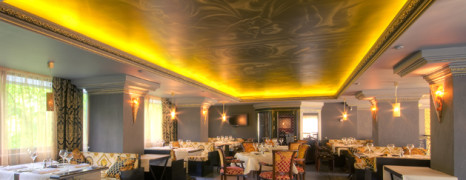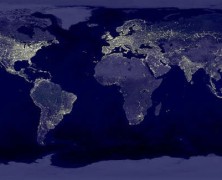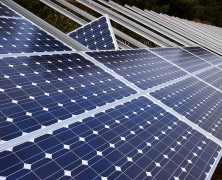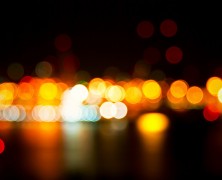It seems every day the LED industry is crossing new boundaries, reaching new thresholds, and brightening an expanding horizon. Adding one more reason for optimism, we’d like to share news about the latest developments in integrated daylight harvesting with LEDs. Integrated LED/daylight systems use sensors to assess how much natural light is entering a room, adjusting the LED system accordingly to reach a desired light level. Basically, these integrated lighting systems improve indoor lighting systems by optimizing artificial light in combination with natural light. The benefit of this system is that it significantly reduces business and consumer energy consumption costs, while greatly improving quality and functionality over conventional lighting set-ups. On their own, high quality LED lights already produce light 80% more efficiently than incandescents. Conventional incandescents actually waste 80% of the energy they require by producing heat rather than light. On this basis alone, it’s clear that LEDs present a huge opportunity for energy savings. With electricity production as the single largest contributor to CO2 emissions, accounting for 38% of U.S. emissions from 1990-2012, the reduction in usage afforded by LED lighting has an enormous environmental impact. But by using natural lights when possible, capitalizing on integrated daylight harvesting with LEDs, the already astonishing energy savings of this revolutionary lighting technology are even greater. Intelligent controls represent one of the greatest advancements brought to us by LED lighting systems. Through digital programming and networked management, LED lighting systems can easily be adjusted to meet predetermined factors. LEDs are superior to CFLs for networked management because they can be turned off and on easier, and can also be finely adjusted. Not only that, but the quality of light produced by many LEDs is actually closer to sunlight than most CFLs, which is another reason people are turning...
4 Ways To Create Ambient Light With LED Strips
posted by Flexfire LEDs
Ambient light is defined as the general illumination within a space. The availability of ambient light throughout the home is one of the most critical considerations in interior design. With LED strip lights, there are many more ways to effectively create ambient light to brighten the home for family and guests. Strip lights capitalize on the well-known benefits of LED technology – providing ample, beautiful light with low energy costs and incredible durability. But there is another important factor exclusive to strip lights, and that is their supreme design versatility. Our strips can be cut, curved and connected to fit any space and shine light exactly where you want it. Here are four ways to create attractive ambient light with LED strips: Indirect Light One of the best uses for LED strip lights is in indirect lighting projects. Indirect lighting is a great way to add focus, texture, layering and accent color to rooms throughout the house. Many people choose to run the strips above cabinets in the kitchen, behind mirrors in the bathroom, or in coves through hallways. Modern designers have expressed a preference for indirect lighting because of the way it hides fixtures and because it produces an evenly distributed glow of ambient light throughout the room. Pro Tip: Take extra care to make sure the high energy areas of your house have ample lighting. Where does the family gather? In the kitchen or the living room? Make sure that the lights you install are bright enough to energize a crowd, making everyone feel lively and excited to be together. Our LED strips are some of the very brightest LEDs you will find on the market. Task Lighting Ambient light in a room is not only measured by how attractive it is, but also by its functionality. One advantage of LED strips is that their versatility makes them great for task lighting installations. LED strip lights are perhaps the best solution there is for under cabinet lighting — a common example of home-based task lighting. Further, this is a simple DIY project that won’t require a huge electrician expense. To add kitchen task lighting, just peel back the adhesive on the back of our strips, stick them under the cabinet and connect them to a power source for incredible kitchen task lighting. Pro Tip: When installing task lighting, it’s a good idea to put in more light than you think you’ll need. First, these lights will last many years into the future, and who couldn’t use more light as the years go on? Second, when you’re focusing on a task, more light means better concentration and improved accuracy. Dimmers Dimmers are important for creating the right ambient light atmosphere in the home. With dimmers, you can turn down the lights as night falls, which will relax your mind and bring you closer to sleep. Dimmers can also be used to add light to a room where natural light normally enters, but perhaps clouds are letting in less light than normal and you need a little extra. With a dimmed LED strip lights, you will have full control to add the perfect level of light necessary for any given situation. Pro tip: Before you add a dimmable LED strip lighting system, it is a good idea to consider whether you want a hardwired wall dimmer or a remote inline dimmer. The latter option is easier if you have a professional electrician on hand, while the second option can be done as part of a DIY installation. Accent Light LED strip lights can also improve a room’s ambient light by adding accent. Running strips along toe kickers or under counters is a great way to add color or textures to a room. With LED strips, the possibilities are only limited by your imagination. If you’re looking to add an extra creative flair, add color-changing RGBs and harness the power of color psychology. For instance, say...
LED Lighting In Developing Countries...
posted by Flexfire LEDs
Worldwide attention was recently centered upon LED technology when the Nobel Prize committee announced that three scientists were awarded the 2014 Nobel Prize in Physics for inventing the blue LED. While many people may have read the news and thought, “maybe it’s time to complete my energy efficient lighting retrofit,” less well-known are the benefits of LED lighting in developing countries. LEDs, combined with solar panels, have been a called a “transformative technology” for more than a billion people who live without a reliable source of electricity. Today, 5 percent of Africans without access to electricity, around 28.5 million people, are using renewable energy-powered LED lights to break through the dark night. That’s in addition to a growing market in South Asia as well. According to Russell Sturm from a private sector investment arm of the World Bank International Finance Corp, worldwide sales of solar-powered LEDs have been growing at a rate of 150% annually for several years. In the past six months alone, 2.1 million LED-solar products have been sold to people around the world who are unconnected to an electrical grid. The majority of the 1.3 billion people who are living without electricity rely on kerosene, wood and candles to produce light and home energy. The economic and environmental costs of these light-generating methods have been pointed to as major stumbling block to productivity and economic growth for the world’s poorest people. Kerosene in particular has been called out due to the fact that it’s relatively expensive and increases risk for fire and health damage. People around the world without electricity spend around $38 billion a year on kerosene. Recognizing the opportunity to disrupt the market, social entrepreneurs have taken to LED technology and are selling it to the world’s poorest people, allowing them to leapfrog...
Solar LED Lights: The Marriage Of Nature and Technology...
posted by Flexfire LEDs
By tapping into the sun’s immense energy, “transformative” LED technology is providing clean, efficient lighting for millions of people around the world. Solar LED lights represent not only a dream scenario for the environmentally conscious, but also a chance to provide light in developing countries where access to electrical grids is scarce. The LED industry has come a long way in the past decade. To illustrate this process, the 2014 Nobel Prize in Physics was awarded to Isamu Akasaki, Hiroshi Amano, and Shuji Nakamura for inventing the blue LED in the early 1990s, which ultimately allowed for the creation of white LED light. “The LED lamp holds great promise for increasing the quality of life for over 1.5 billion people around the world who lack access to electricity grids,” the Royal Swedish Academy of Sciences noted in their Nobel Prize press release. “Incandescent light bulbs lit the 20th century; the 21st century will be lit by LED lamps.” One of the great opportunities provided by LEDs is the harmonious relationship they hold with clean, renewable solar energy. Photovoltaic panels create solar energy by converting the sun’s rays into direct current (DC) electricity. This DC current, in contrast to the alternating current (AC) electricity of the conventional grid, is the same form of electricity used by LED lighting. In fact, photovoltaics are also composed of diodes that in many ways are the inverse technology of LEDs. Most of the time, the electricity collected by solar photovoltaics is not used at the exact moment the sun is shining. This necessitates battery storage to hold this collected energy for later use. Due to their compact size, astounding efficiency, and advanced programability, LEDs are clearly the most effective type of light to draw power from these expensive batteries. During the past decade, the...
Top 4 Reasons Why LED Lights Are Energy Efficient...
posted by Flexfire LEDs
LED lights are commonly discussed in the news today, for a variety of different reasons. Above all, there’s a great deal of emphasis on the fact that they’re considered “energy efficient”. But what does this mean exactly, and is it really the case? For a better understanding of this important topic, here are the top 4 reasons why LED lights are energy efficient, making them the best choice for residential, commercial and industrial applications. Lots of Light and Little Heat LEDs use only a fraction of the energy used by CFLs or incandescents to produce the same amount of light. For example, the standard 40 watt incandescent bulb produces 400 to 500 lumens (a measurement of light brightness). To produce this light with CFLs, you would need to use 8 to 12 watts. LEDs are simply more efficient; Flexfire LEDs’ UltraBright strip lights, for example, each foot of reel produces 400 to 670 lumens for just 4.4 to 7.5 watts. The reason for this is that the vast majority of energy that goes into LED lights is transferred into light. When properly engineered, many LED lights operate near 80% efficiency. That means 80% of the energy used becomes light. Incandescent bulbs on the other hand, work at just 20% efficiency, meaning that 80% of the energy used is transferred into heat—instead of light. The U.S. Energy Information Administration estimates that 17% of the total energy used by the United States’ commercial and residential sectors in 2012 went to lighting. That means switching to more efficient LEDs could have a dramatic impact on the country’s energy consumption. Longer Lasting When a light bulb goes dead, it costs energy to replace it. First, a factory must use energy to build its replacement. Then more energy is used...






